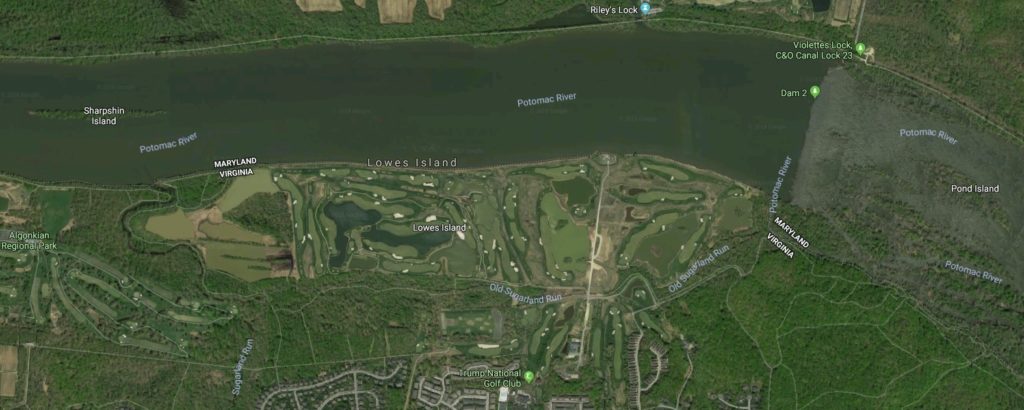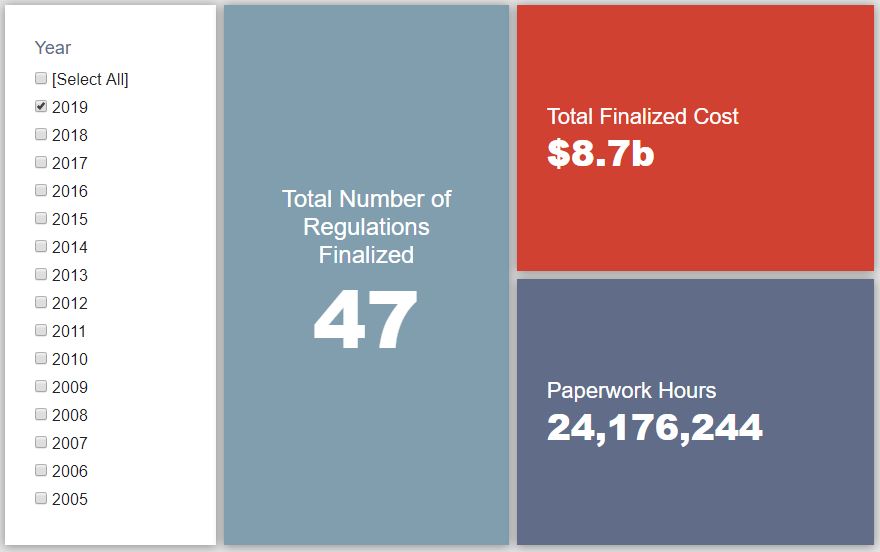Week in Regulation
March 25, 2019
A Deregulatory Week Finally Emerges
After a series of weeks with net cost increases, this past week saw a notable turn back to the cost-cutting side. The most significant measure of the week was the Department of Labor’s (DOL) proposed rule regarding its revamped “Overtime Rule,” which moved the cost savings needle by the billions. Between both proposed and final rules last week, agencies published $3.3 billion in total net cost reductions, but added 309,365 hours of new paperwork.
REGULATORY TOPLINES
- New Proposed Rules: 45
- New Final Rules: 59
- 2019 Total Pages: 10,943
- 2019 Final Rule Costs: $8.7 Billion
- 2019 Proposed Rule Costs: $4.5 Billion
TRACKING THE REGULATORY BUDGET
The main driver of cost reductions last week was DOL’s new rulemaking regarding “Defining and Delimiting the Exemptions for Executive, Administrative, Professional, Outside Sales and Computer Employees.” The American Action Forum (AAF) provides greater context of the proposal here. Although its proposed rule status means that its savings do not yet apply to the fiscal year (FY) 2019 regulatory budget under Executive Order (EO) 13,771, DOL currently estimates that it would provide $3.2 billion in total cost savings ($224 million annually). That would single-handedly put it well over DOL’s FY 2019 goal of $723.2 million in net savings.
The most significant deregulatory action that does apply to the FY 2019 budget comes from the Food and Drug Administration (FDA). That final rule extends the compliance deadline for certain items under FDA’s “Standards for the Growing, Harvesting, Packing, and Holding of Produce for Human Consumption” based upon the size of the producer. The agency estimates that this extension could provide savings of up $97 million.
So far in FY 2019 (which began on October 1, 2018), there have been 36 deregulatory actions (per the rubric created by EO 13,771 and the administration’s subsequent guidance document) against 14 rules that increase costs and fall under the EO’s reach. Combined, these actions yield quantified net costs of roughly $10 billion. This total, however, includes the caveat regarding the baseline in the Department of Agriculture’s “National Bioengineered Food Disclosure Standard.” If one considers that rule to be deregulatory, the administration-wide net total is approximately $3.3 billion in net costs. The administration’s cumulative savings goal for FY 2019 is approximately $18 billion.
THIS WEEK’S REGULATORY PICTURE
One can describe “regulatory policy” in many ways: mundane, opaque, monotonous, complex, legalistic. The list goes on. In order to help provide a clearer and more straight-forward view into this world, the AAF will seek to provide a brief illustration of a notable regulatory trend we have identified in a given week. This week’s entry: the interplay of regulations and public input in protecting the president and other officials at Trump National Golf Club.

One unique aspect of Donald Trump’s presidency is his penchant for frequent outings to his company’s golf course properties. In 2017, the U.S. Coast Guard, which is responsible for the establishing safety zones when necessary in federal waters, noticed a trend. The U.S. Secret Service was making frequent requests of the Coast Guard to close the Potomac River near Trump National Golf Club in Virginia. The Coast Guard decided it was best to establish a permanent security zone along the area rather than to do so on an ad hoc basis. The result was an interim rule (IR) that covered much of the Potomac River shown in the image above, as far west as part of Sharpshin Island and as far east as Pond Island. All vessels were prohibited from this area when an official requiring security was in the area, unless given specific permission by the Coast Guard.
Well, many people weren’t happy. Though they have the effect of a final rule, IRs are subject to public comment, and if warranted an agency can make changes. In more than 630 comments, many affected locals expressed concern the area was too large and had too much negative impact on local campgrounds, small businesses, and recreational boaters. One notable comment suggested that the president skip the golf holes along the water’s edge.
This past week, the Coast Guard addressed some of these concerns, issuing an updated IR that reduces the western boundary of the zone by 500 yards and the eastern boundary by 600 yards. The new IR also establishes an approximately 250-yard transit area extending from the shoreline of Maryland that vessels can use to cross the zone with the Coast Guard’s permission. There is nothing in the regulatory text requiring the president to skip holes, however.
TOTAL BURDENS
Since January 1, the federal government has published $13.3 billion in net costs (with $8.7 billion in finalized costs) and 23.2 million hours of net paperwork burden increases (including roughly 24.2 million hours from final rules). Click here for the latest Reg Rodeo findings.












